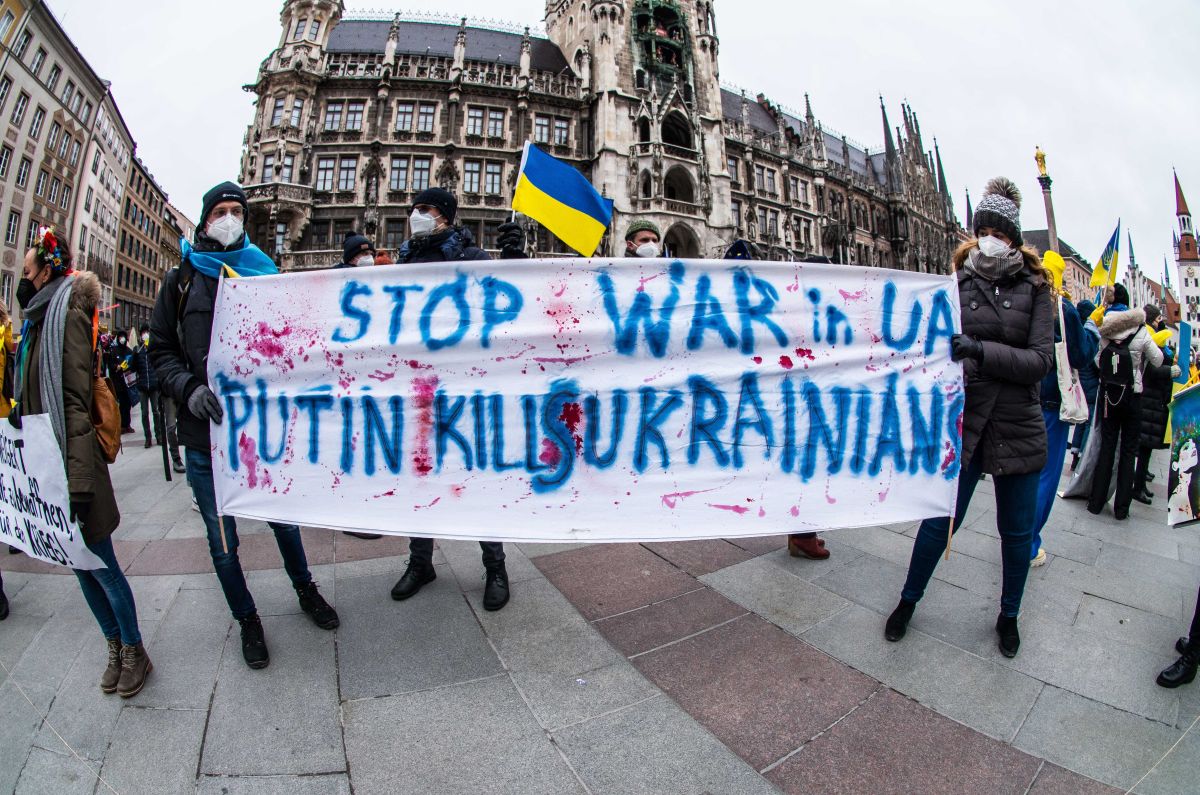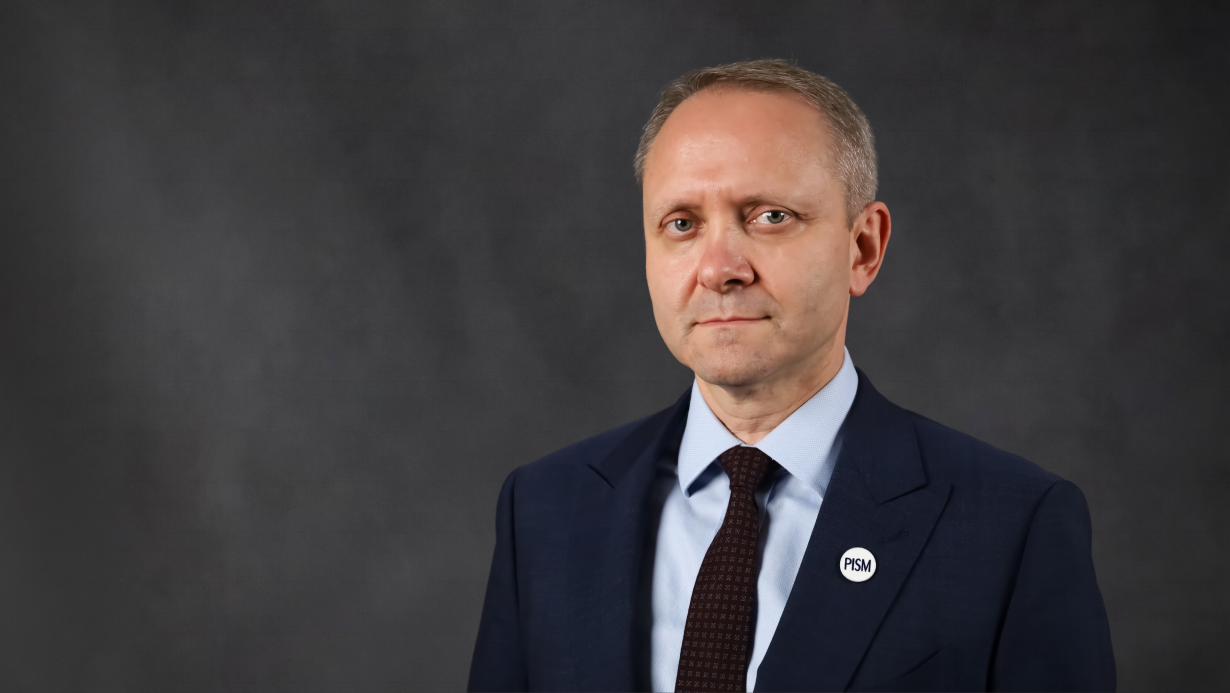NATO in the Face of Russian Aggression against Ukraine
The intensification of the threat of Russian aggression against Ukraine has once again revealed differences among NATO allies regarding possible sanctions against Russia and practical support for Ukraine. Nevertheless, the Alliance has maintained its cohesion and has taken measures that may significantly increase the cost of possible aggression. However, it will be a challenge to maintain the unity in the long run, both in the event of Russian attack and the continuous military pressure on Ukraine to force concessions in negotiations with the West.
 Fot. Zuma Press/ Sachelle Babbar/ FORUM
Fot. Zuma Press/ Sachelle Babbar/ FORUM
Since 2021, Russia has been accumulating military potential at the borders of Ukraine and has increased its ability to launch a military offensive on short notice from various directions. According to information provided by the U.S. to the allies on 11 February, the attack may occur at any moment. If Russia decides to take such a step, it will not only be a blatant violation of the basic principles of international law but also a huge challenge to the security of NATO’s Eastern Flank.
By using the threat of force, Russia has attempted to force political concessions, formulated as proposals for treaties with the U.S. and NATO and presented on 17 December 2021. In accordance with the Russian demands, Western states should abandon the Alliance enlargement policy (the so-called open door policy), withdraw troops and infrastructure from the new member states (return to the status from 1997), and not undertake actions in the area adjacent to Russia that it perceives threatens its security (including exercises, the presence of troops, and various types of weapons). Accepting these demands would not only limit Ukraine’s sovereignty but also would formally recognise a Russian sphere of influence and military buffer zone where NATO and the U.S. would have limited ability to defend their allies and support partner countries. For this reason, Russia’s demands were unanimously rejected by the Allies.
The Threat of Costs and the Offer of Dialogue
Already in 2021, when the prospect of Russian aggression against Ukraine began to grow, the priority of the Alliance member states was to persuade Russia to de-escalate. The U.S. began to publicise the threat of a Russian attack to mobilise the Alliance to take the necessary actions. The allies have used consultation mechanisms to strengthen political cohesion and to agree within NATO the decisions that combine the threat of costs in the event of aggression with an offer for a meaningful dialogue. The member states and partners of the Alliance (including Sweden and Finland) began agreeing possible financial, economic, and political sanctions against Russia. Individually and within NATO, member states have tried to persuade Russia to talk about arms control, risk reduction, and disarmament, which it had previously not been interested in. Russia agreed to meet in the NATO-Russia Council for the first time in two years, but has not responded to the offer of regular meetings and did not reduce tensions.
On 26 January, in line with Russian expectations, the U.S. and NATO replied in writing to the Russian demands. The Western states announced that they would not give up the open-door policy and called on Russia to respect the agreed principles and norms on which the Euro-Atlantic and global security system is based. NATO and the U.S., which coordinated their proposals, reiterated the offer of dialogue between the U.S. and Russia, within the framework of the NATO-Russia Council and within the OSCE. NATO’s proposals did not indicate the possibility of any unilateral concessions that Russia was asking for. On the other hand, some American proposals, although emphasising the principle of reciprocity, could give Russia hope to limit the possibility of deploying U.S. troops and some weapons systems on the Eastern Flank of the Alliance. The U.S. also offered Russia talks on the indivisibility of security, which is one of the principles of the Euro-Atlantic security system. Russia stressed that the proposals did not address its main demands, but seemed interested in discussions on the principle of the indivisibility of security to block the Alliance’s enlargement policy.
NATO Support for Ukraine and Divisions Among the Allies
Although there is no consensus within the Alliance on Ukraine’s membership, the announcement to maintain the open-door policy is of strategic importance. With such political support, Ukraine gains greater opportunities to resist pressure from Russia, defend its sovereignty, and receive support from NATO member states. The alliance was sending signals that it would not engage in a dialogue with Russia at the expense of Ukrainian interests. The scale and type of practical cooperation within NATO, however, do not significantly increase Ukraine’s defence potential. Assistance provided through previously established financial mechanisms support i.a. cyberdefence, logistics, communications and command systems. NATO only accelerated the signing of a previously planned agreement on cooperation in the development of command, communication, and control systems.
As Ukraine is not a member of the Alliance, defence support is not a treaty obligation and is provided mainly on a bilateral basis. Some countries, however, fear that this type of aid could contribute to an escalation of the Russia-Ukraine conflict, make negotiations with Russia more difficult, and may be used by Russia as a pretext to attack Ukraine, which would increase the risk of a conflict between Russia and NATO countries. Some members also do not want to jeopardise their bilateral relations with Russia. That is why the divisions between the allies once again were laid bare in terms of the scope and type of aid and possible sanctions against Russia. Germany blocked Ukraine from purchasing weapons through the NATO Support and Procurement Agency (NSPA). It also did not agree to let Estonia hand over to Ukraine the howitzers received from Germany and offered support only in the form of helmets and a field hospital. The Germans have been criticised for sending contradictory signals regarding the possible exclusion of Russia from the SWIFT banking system and the blocking of the Nord Stream 2 pipeline. The Hungarian prime minister directly undermined Alliance cohesion when he stated that Russia’s demands for a security guarantee were justified and that sanctions did not make sense. Hungary has also blocked Ukraine from joining NATO’s Cyber Defence Centre of Excellence.
Despite this, in the face of the escalation of tensions by Russia, the scale of military aid and the number of allies willing to provide it began to increase. At the same time, the Alliance announced that it was not planning to deploy troops to Ukraine, and individual states emphasised that their goal was to strengthen Ukraine’s defensive potential, not its offensive capabilities. As the risk of a Russian attack increased, the U.S., the UK, and Canada withdrew small training units from Ukraine.
Strengthening Defence and Deterrence
As part of deterring Russia from attacking Ukraine, NATO is taking steps to prepare the Alliance for a possible escalation. The Allies decided to raise the readiness of the NATO Response Force (NRF) component of several thousand soldiers. They also signalled their readiness to create a new battle group in Romania, following the example of the existing units in Poland and the Baltic states. The U.S. announced that it was ready to strengthen the NRF with an additional 8,500 troops. It decided to strengthen its military presence in Romania (by about 1,000 troops) and Poland (by about 5,000 troops), and to deploy an additional command element in Germany. For the first time since the end of the Cold War, the U.S. placed an aircraft carrier combat group under NATO command. Additional troops on the Eastern Flank were sent by UK, France, Germany, and Denmark. These actions will make it more difficult for Russia to divide the Alliance and facilitate a further strengthening of the defence and deterrence potential on the Eastern Flank and an increase in support for Ukraine.
Conclusions and Perspectives
The threat of Russian aggression against Ukraine has revealed some of the divisions between the Allies but mainly in areas where members are not limited by treaty obligation. The Alliance has maintained a sufficient level of political coherence in the most important areas: defending the principles on which the European security architecture is based (including the freedom to choose alliances) and readiness to fulfil collective defence commitments. Russia also has had to reckon with severe sanctions, Ukraine’s enhanced defence capacity, and the expansion and consolidation of NATO/U.S. presence on the Alliance’s Eastern Flank. The challenge for the allies will be to maintain political cohesion in the long run. In order to reduce the risk of divisions, the Alliance should, among other things, return to the practice of agreeing a common position before negotiations with Russia on the level of the U.S.-Russia strategic dialogue (in areas related to the security of Europe), in the NATO-Russia Council, and within the OSCE. In order to strengthen the consultation mechanisms, it will be necessary to introduce appropriate wording in the new NATO Strategic Concept, which is to be adopted in June during the Madrid summit.


